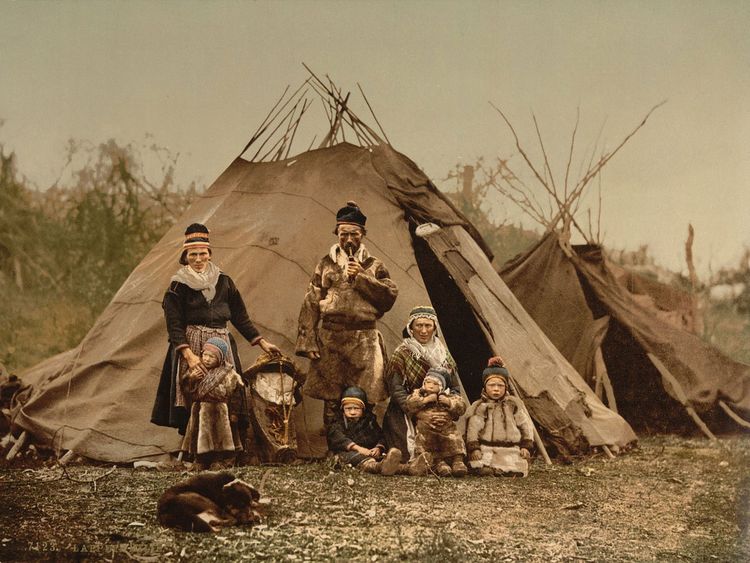The Sámi live in Sápmi, their traditional land spread across four Nordic countries. Large renewable energy projects and mining activities in Sweden are encroaching on their land and disrupting their traditional lifestyle.
In discussions about indigenous rights and struggles worldwide, the focus often centres on the vocal indigenous communities of the United States, Canada, Australia, and New Zealand. Latin American indigenous peoples also frequently gain media attention for their environmental and climate justice efforts, while in India, indigenous groups are noted for resisting exploitation through militancy. However, the situation of the Sámi people, indigenous to northern Sweden and parts of Norway, Finland, and Russia, has largely remained unnoticed.
Having authored a book on indigenous struggles in India and conducted environmental rights training in Central America, I’ve found the Sámi seldom mentioned in such contexts. Their relative obscurity in international academic and policy discourse may stem more from their geographic location. The Nordic region, particularly Sweden, is renowned for its quality of life and governance, making it difficult to associate with indigenous exploitation. But there is no rose without thorns.
The Sámi, numbering between 80,000 and 100,000, live in Sápmi, Sámi traditional land in four countries, with 20,000 to 40,000 in Sweden. Their small population, spread over a large geographic area, has made their struggle against the state difficult.
From the 19th century, the Swedish government implemented policies of ‘Swedification,’ which sought to absorb the Sámi into the broader Swedish culture.
Unlike countries like Canada or New Zealand, which have more robustly recognised indigenous rights, Sweden’s approach is tentative. Sweden hasn’t even ratified the Indigenous and Tribal Peoples Convention (ILO 169). The Sámi Parliament, established in 1993, serves more as an advisory than a legislative body. The Sámi’s history in Sweden includes forced assimilation and cultural erasure, with traditional livelihoods like reindeer herding, fishing, and fur trapping historically undermined by European expansion. The Church of Sweden played a significant role in this oppression.
From the 19th century, the Swedish government implemented policies of ‘Swedification,’ which sought to absorb the Sámi into the broader Swedish culture. This involved the suppression of the Sámi language, customs, and way of life. Children were sent to Swedish schools where they were forbidden to speak their native tongue, and the practice of traditional beliefs was discouraged.
Racial biology theories emerging in Sweden led to the establishment of the world’s first State Institute for Racial Biology in 1922. Its director conducted pseudo-scientific examinations on the Sami, often involving children and the elderly, to prove they were an “inferior race.”
Historical struggles and contemporary challenges
In 2021 and 2022, the Archbishop of the Church of Sweden apologised to the Sámi for past abuses. This reconciliation acknowledges forced Christianisation, the destruction of religious sites, and the suppression of Sámi culture. The Swedish government’s recent establishment of a Truth Commission, operational since early 2023, marks a hesitant step in acknowledging the Sámi’s systemic injustices. However, its mandate is limited in addressing historical and ongoing grievances.
Currently, the Sámi people are facing not only their historical struggles but also contemporary challenges that the Swedish state has not sufficiently addressed. Compounding the issue, the Arctic is warming at a rate faster than the global average, leading to altered weather patterns due to climate change. These changes significantly impact reindeer herders, as reindeer struggle to survive in milder winters and hotter summers.
Large renewable energy projects, such as hydropower and wind farms, are encroaching on their land and disrupting their traditional lifestyle. This includes impacts on reindeer herding, central to Sámi culture. Additionally, the increase in mining, particularly for rare earth minerals essential in modern technology, poses new risks.
Hydropower, often praised as a clean energy source, has significantly affected the Sámi people. The construction of numerous dams and reservoirs in northern Sweden has altered natural watercourses essential for the Sámi’s traditional fishing activities. Furthermore, the creation of hydropower reservoirs, 80 per cent of which are located on Sámi land, has led to the flooding of large areas, resulting in the loss of reindeer grazing land, a fundamental aspect of Sámi culture. Several Sámi households have been displaced, with some experiencing displacement up to four times.
As the world shifts towards renewable energy, wind power has become increasingly prominent in Sweden. The development of wind farms in Sámi territories, however, has introduced additional challenges. These wind farms typically require extensive infrastructure, such as roads and power lines, which further fragment the reindeer grazing areas. Moreover, the noise and physical presence of wind turbines disrupt the migration and grazing patterns of the reindeer.
Mining threat to the Sámi way of life
Mining activities pose a particularly direct threat to the Sámi way of life. Northern Sweden, rich in minerals like iron ore, has experienced a boom in mining. These mining operations involve clearing vast areas of land, disrupting the natural environment and contaminating it with waste and chemicals. The encroachment of mining on these lands not only endangers reindeer herding but also threatens the Sámi’s cultural sites and artifacts, many of which are situated in these ancient landscapes. The discovery of over 1 million tons of rare earth minerals in Sápmi raises further concerns for the future of Sámi lands and culture. These minerals are crucial for various technologies, including electric vehicle batteries and wind turbines.
The situation of the Sámi in Sweden highlights the complexity of balancing industrial and renewable energy development with indigenous rights and traditions. It emphasises the need for a development approach that truly includes and respects indigenous communities, even in a country like Sweden. Achieving sustainable development should not be at the cost of indigenous communities.
The Sámi’s story is a reminder of the often-ignored struggles of indigenous peoples in regions considered progressive and developed. Their fight for rights and recognition, amid modern environmental challenges and historical injustices, deserves more attention in the global dialogue on indigenous rights.


